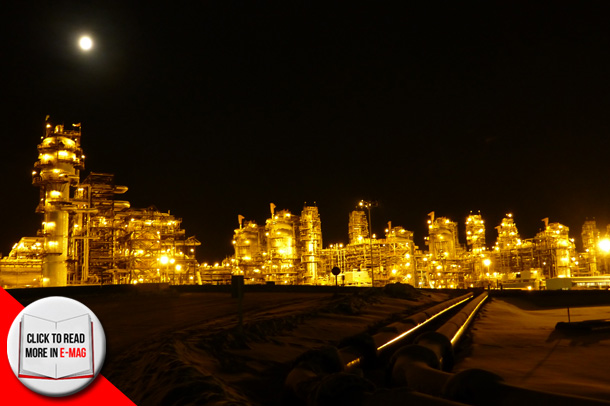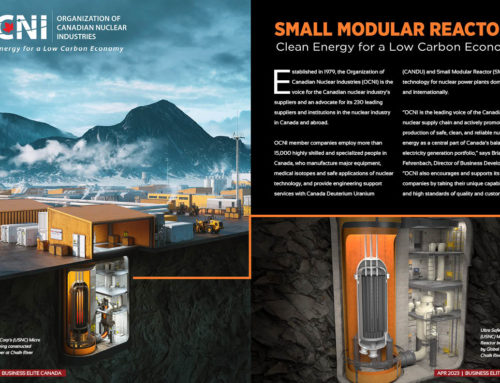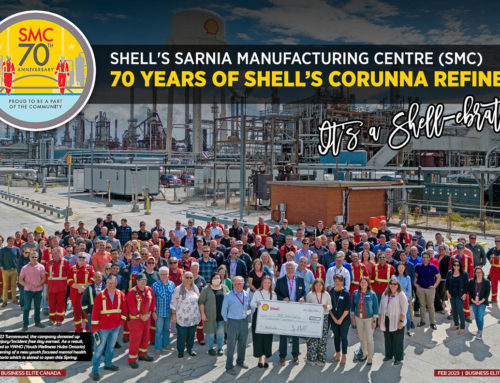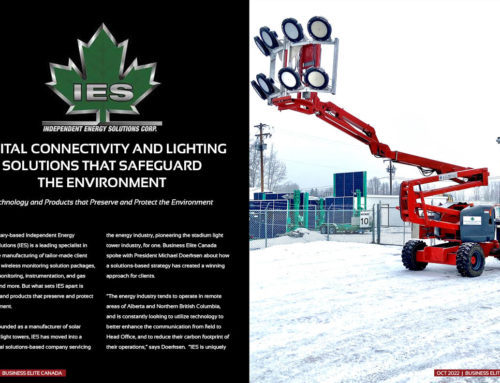Imperial turns to Kearl
With patented technology, production efficiencies look to reduce environmental impact
By: Perry King
Since beginning plans on the Kearl Oil Sands project in the early 2000s, and sanctioning the project in 2009, Imperial Oil Resources is charting new territory, taking on one of Canada’s largest oil sands projects with an eye for saving costs and reducing their environmental footprint.
“The combination of technology innovations we’ve brought to bear at Kearl, to reduce cost and improve environmental performance, we genuinely believe that Kearl represents the next generation of oil sands technologies,” said Imperial spokesman for Public and Government affairs, Pius Rolheiser. “In terms of the value that it’ll provide to Imperial’s shareholders, by virtue of having a very strong resource base, Kearl represents one of the best undeveloped deposits of mineable oil sands in the region.
“The ore grade and quality of bitumen that can be produced are better than most other undeveloped leases, and provide the project with an inherent cost advantage.”
The project is an economic boon. Located 70 kilometres north of Fort McMurray, Alberta, Imperial is expecting to product about 4.6 billion barrels. At its peak, the project will employ 5,000 people, and 1,000 permanent jobs will be in place.
With production projected to last 40 to 50 years, Kearl has got a relatively low-unit operating cost. With the total recoverable resource figure estimated at 4.6 billion barrels, and the potential to double Imperial Oil’s production by 2020, the Kearl project is expected to be among the largest oil sands projects in the world by 2020, in terms of volume and capital cost.
“We believe that Kearl is the best project out there,” “Certainly, we’ve incorporated into our project execution for Kearl lessons Imperial learned at its Cold Lake operation.”
The Cold Lake oil sands, located near the Alberta-Saskatchewan border, are one of the oldest oil sands developments, with commercial production launched in 1985. With years of experience handling that project, and internal funding by Imperial, who own 71 per cent of the sands, and co-owners ExxonMobil Canada, the project came to fruition after a lengthy process.
Public disclosure of the project was made by Mobil Canada in 1997, and following the merger of Mobil and Exxon in 1999 and other developments, Imperial formally made a regulatory application filing for the Kearl project in 2005. Despite a regulatory/legal challenge that resulted in a one-year delay, the Athabasca Oil Sands-centered mining project was approved by regulators in 2009 and was subsequently approved by Imperial’s board the same year.
“The key challenge would be managing the cost, regulatory and other challenges, of building a world-scale project, building a grassroots world-scale project,” Rolheiser said.
That includes the environmental impacts, of which Imperial has been careful to mind. A number of technology innovations have been developed by the mine’s owners to address the issue.
Kearl will be the first open-pit mining operation to produce pipeline-ready bitumen — a sticky, black, and viscous form of petroleum oil — without using an upgrader, a facility that refines bitumen to synthetic crude oil.
“We do that by virtue of a technology called paraffinic froth treatment,” said Rolheiser, mentioning a proprietary technology patented by ExxonMobil, Imperial’s affiliate and major shareholder.
Generally, froth treatment extracts clean bitumen from the froth, a mixture of water, bitumen and other compounds. In the past, oil sands projects upgrade their mined bitumen before pipelining their product to oil refineries.
“[Paraffinic froth treatment], basically, yields a higher grade of bitumen that can be shipped to refineries without upgrading,” Rolheiser said. “It’s blended with a lighter hydrocarbon diluent, but then can be shipped.”
To Imperial Oil, this process is efficient in production, and lowers greenhouse gas emissions. “What that does is it eliminates the need to upgrade at site,” Rolheiser said. “Basically, you ship it directly to a high-conversion refinery, which refines it into end products — like gasoline, diesel fuel, jet fuel — you heat the molecules once rather than twice.”
Imperial’s environment initiatives do not end at the production line. Electrical co-generation will save energy by using the same heat to generate electricity and generate steam for industrial purposes.
“The combination of paraffinic froth treatment and electrical co-generation will result in Kearl being able to produce bitumen with about the same life cycle greenhouse gas emissions as many other crude oils that are currently refined in the United States.”
It’s something Imperial is especially proud of, given their decade-long efforts to address concerns. The project is also adding fish habitat to Kearl Lake to compensate for habitat that was being disturbed elsewhere in the area by project development.
“We’ve added a larger quantity fish habitat, by actually adding on 25 per cent onto an existing lake in the region, making it deeper so the fish survive over winter,” said Rolheiser, who noted that Imperial Oil consulted with local First Nations communities extensively about this and numerous matters.
Based on their learnings about staged growth at Cold Lake, the project will see measured growth before coming to their licensed production capacity in 2020.
“The Kearl initial development, later this year, will reach production capacity of about 110,000 barrels a day,” said Rolheiser. “That will grow to about 145,000 barrels a day by about 2015, with additional mine capacity.”
An expansion phase is scheduled for start-up in 2015.
“Our expectation is that it will produce in the range of 345,000 barrels a day for 40-plus years,” he added.
On-site water storage capability will store Athabasca River water in the high-flow period in spring, to ease water withdrawal during lower-flow periods of the year. Tailings systems will be in place, which will intercept and thicken the tailings, or leftover residue from bitumen refining. Site reclamation and remediation, a continuous process over the life of the project, will bring back native plants to exhausted sites. Waterfowl deterrent systems will protect local migrant birds.
Imperial is setting a tone for environmental planning in the region, but Rolheiser downplays whether the innovations have paved the way for benchmarks in the oil sands industry, chalking up the many good projects they deploy as merely due diligence.
“Our approach is easily described as design-one, build multiple,” he said. “The Kearl expansion phase, which is currently under construction, will be a carbon copy of the existing Kearl initial development.
“What that does is you only have to do engineering once rather than twice. It also brings new production in a more gradual manner. There’s inherent advantages, rather than bringing 345,000 barrels a day to market in a single stroke, to doing that over a phased period of time. That allows you to tailor and match growth to market conditions.”







